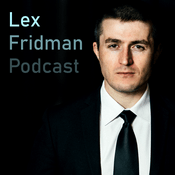1173 episodes

Inside SpaceX's Plan to Build Five Starship Launch Pads
2026/1/05 | 10 mins.
SpaceX flew Starship five times in 2025. The first three flights lost their ships during ascent. A fourth ship exploded on the test stand. Then Flights 10 and 11 succeeded, proving Block 2 works. Meanwhile, SpaceX is constructing Giga Bays in Texas and Florida to build 80-meter Block 4 boosters, preparing five launch pads across two states, and developing barge transport to ship vehicles from Starbase to Kennedy Space Center. Flight 12 with Block 3 hardware is next.

BYD Outsold Tesla by 600,000 Cars. Here's How
2026/1/04 | 11 mins.
BYD sold 2.26 million electric vehicles in 2025. Tesla delivered 1.64 million. For the first time on a calendar-year basis, Tesla is no longer the world's largest EV maker. The company Elon Musk dismissed in a 2011 interview now leads the global market by more than 600,000 vehicles. Tesla posted its second consecutive year of declining deliveries amid an aging lineup, political backlash against Musk, and the end of the federal EV tax credit.

Tesla's Cybercab Deadline and the Steering Wheel Question
2026/1/03 | 12 mins.
Tesla confirmed Cybercab production will start in April 2026, with Elon Musk promising a vehicle with no steering wheel and no pedals. But prototypes spotted testing in Austin show human drivers with their hands on steering wheels. With Full Self-Driving still requiring supervision and federal regulations capping steering-wheel-less vehicles at 2,500 units per year, Tesla faces a choice: launch a vehicle it cannot deploy at scale, or add the controls Musk promised to eliminate.https://wilwaldon.com

Tesla's $2.9 Billion Battery Deal Just Collapsed to $7,386
2026/1/03 | 11 mins.
South Korean supplier L&F announced that its $2.9 billion contract to supply battery materials to Tesla has been written down to just $7,386, a reduction of more than 99 percent. The materials were intended for Tesla's 4680 battery cells, which power the Cybertruck. With the Cybertruck selling at a fraction of its production capacity and the $25,000 Tesla cancelled, the 4680 program that Musk promised would halve battery costs has collapsed.

SpaceX Starship Flight 12 Update
2026/1/02 | 24 mins.
Track everything happening ahead of SpaceX Starship Flight 12 in one place. This live Starship Tracker follows the real-world milestones from Starbase as they happen, including vehicle status, test campaign progress, schedule signals, and any official updates that move the launch closer.What you will see on this tracker:Current readiness status and major pre-flight milestonesStarbase activity updates and test operations timelineShip and Booster progress checkpoints (as reported by credible sources)Launch window signals, delays, and what they likely meanFlight 12 news recaps when meaningful updates breakSources referenced may include: SpaceX statements, FAA notices, public filings, on-site reporting, and reputable spaceflight outlets. This is an independent tracker and is not affiliated with SpaceX.If you want more Starship coverage, subscribe and turn on notifications so you do not miss key Flight 12 developments.#SpaceX #Starship #Starbase #Flight12 #SpaceNews
More Technology podcasts
Trending Technology podcasts
About Elon Musk Podcast
Listen to Elon Musk Podcast, Hard Fork and many other podcasts from around the world with the radio.net app

Get the free radio.net app
- Stations and podcasts to bookmark
- Stream via Wi-Fi or Bluetooth
- Supports Carplay & Android Auto
- Many other app features
Get the free radio.net app
- Stations and podcasts to bookmark
- Stream via Wi-Fi or Bluetooth
- Supports Carplay & Android Auto
- Many other app features


Elon Musk Podcast
download the app,
start listening.





































